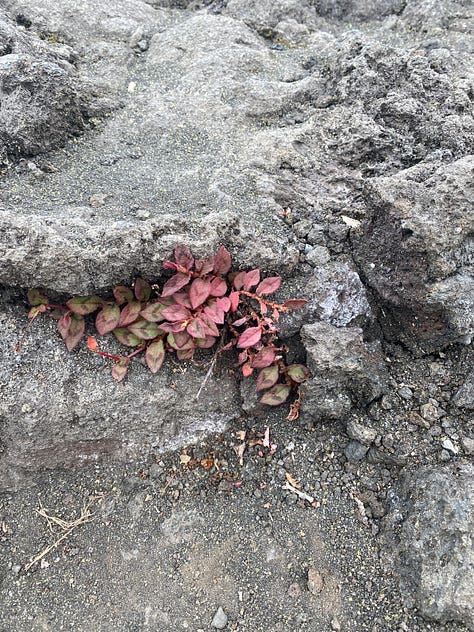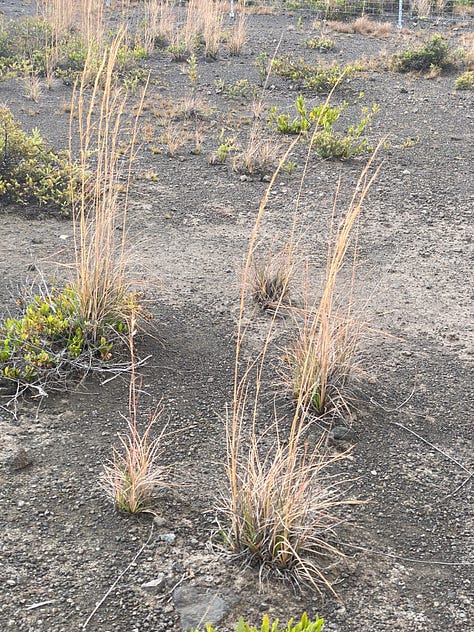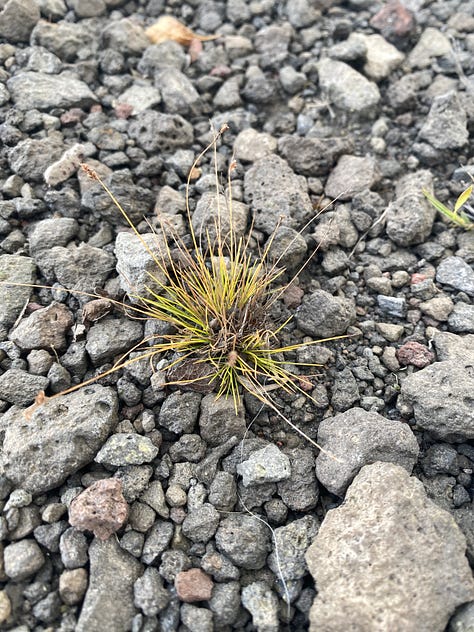Random photo(s) #4-Botanizing with a buddy
On the Big Island
Last week, my family and I vacationed on the Big Island of Hawaii. Traveling always allows the opportunity to botanize and it is especially exciting to do so in a tropical climate, so different from that of Minnesota. The Big Island isn’t just tropical. It features five volcanoes, two of which, Mauna Loa and Mauna Kea are nearly 14,000 feet in elevation. The varied climate of the Big Island makes for unmatched botanizing.
What made this Big Island botanizing more fun, was doing it with a buddy; our three year old Edwin was always in tow. We botanized in the lawn at the house, near the beach and hiking through the Kilauea Iki crater at Volcanoes National Park.









Photo #1: Edwin and I checked out the lawn at our rental on the first morning, where we found a wonderful polystand of…
Photo #2…some kind of tropical sedge, a fine leafed bermudagrass and this tropical carpetgrass.
Photo #3: Hiking at ‘Akaka Falls State Park
Photo #4: Edwin hikes the pahoehoe lava looking for plants in the Kilauea Iki crater.
Photo #5: An unidentified dicot in the crater.
Photo #6: An unidentified monocot, also in the crater.
Photo #7: A plant I tentatively identified as Bulbostylis, or hairsedge. I looked like clumps of fine fescue. This plant was growing all over the crater. It was incredible to see any plants growing in the crater, where the growing conditions are harsh. Not surprisingly, given such harsh growing conditions, the plants are tiny, even though the last time this crater was active was 1959.
Photo #8: The forest meets the ocean at the end of the Pololu Valley.
Photo #9: An unidentified ground cover in the forest of the Pololu Valley.


